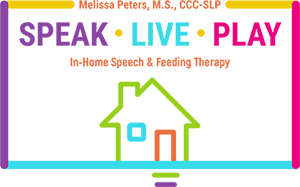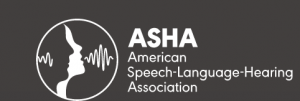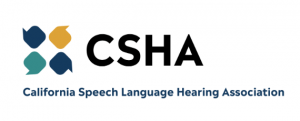Speech Sound Disorders in Children
Speech sound disorders in children can cause challenges in different aspects of their lives. Parents and caregivers must identify the signs, seek early intervention, and provide ongoing support. These difficulties can affect communication and potentially impact academics. This article will examine speech sound disorders, covering types, causes, diagnosis, and effective intervention strategies.
Speech sound disorders cover many difficulties children may encounter when pronouncing words or sounds accurately. Addressing these issues early on is crucial to support a child’s overall development. As we discuss the complexities of speech sound disorders, let’s comprehensively understand their types and the underlying causes. Speech therapy is crucial for assisting children in overcoming challenges and enhancing their communication skills.
Types of Speech Sound Disorders
Articulation Disorders
Speech sound disorders, or articulation disorders, arise when individuals experience challenges articulating sounds, potentially impacting speech clarity. This discussion will explore how these challenges affect a child’s communication ability. Transitioning between ideas, let’s explore the various aspects of speech sound disorders and understand their significance in communication for individuals of all ages.
 Phonological Disorders
Phonological Disorders
Phonological disorders, or speech sound disorders, extend beyond specific sounds. They impact the comprehension and arrangement of good patterns. This exploration will delve into the complexities of phonological difficulties and their effects on language development. We can better understand how these disorders manifest and their implications using transitional words. Remember that speech sound disorder and phonological disorders are phrases we will encounter throughout this discussion, as they play a vital role in our understanding.
Childhood Apraxia of Speech
Childhood Apraxia of Speech, a speech sound disorder, is a motor speech disorder. In this disorder, the brain struggles to coordinate the movements required for accurate speech. Here, we will explore the unique challenges posed by Childhood Apraxia of Speech and effective strategies for intervention. This disorder affects the ability to produce speech sounds correctly. Remember, Childhood Apraxia of Speech is mentioned multiple times for better clarity.
Causes of Speech Sound Disorders
Understanding the root causes of speech sound disorders is essential for designing effective and personalized interventions. In our exploration, we will explore various factors that contribute to these challenges, encompassing genetic predispositions, developmental influences, and environmental and social considerations. By comprehensively examining these multifaceted aspects, we can better understand speech sound disorders and develop targeted strategies to address them.
 Genetic Factors
Genetic Factors
Genetic predispositions can play a significant role in developing speech sound disorders. Understanding and recognizing familial patterns of these disorders is crucial as it can guide intervention strategies effectively. By being aware of the genetic influences, speech therapists and researchers can tailor their approaches to better address the specific needs of individuals with speech sound disorders, ultimately improving the effectiveness of interventions and outcomes.
Hearing Loss
Hearing loss can profoundly impact a child’s speech development, affecting their ability to articulate and communicate effectively. Our examination will delve into the correlation between hearing impairments and speech sound disorders, highlighting the criticality of early detection and intervention. By providing more comprehensive detail, we aim to shed light on the intricate relationship between hearing and speech, ultimately advocating for improved support and resources for children with hearing impairments.
Developmental Factors
When delving into the fascinating developmental aspects that contribute to speech sound disorders, it is crucial to recognize and understand the significance of certain milestones. These milestones act as valuable indicators and play a pivotal role in guiding early intervention efforts, ensuring that appropriate strategies are implemented to support individuals with speech sound disorders. By examining these milestones in greater detail, we can gain deeper insights into the complexities of speech development and tailor interventions to address specific needs.
Signs and Symptoms
Recognizing the signs and symptoms of speech sound disorders is crucial for early intervention. From common mispronunciations to communication challenges, we’ll highlight what parents should be attentive to.
Mispronunciations
This comprehensive exploration will delve into specific examples of common mispronunciations. By doing so, we aim to provide valuable insights into what may indicate an underlying speech sound disorder, shedding light on potential causes and offering guidance for effective intervention. Join us on this enlightening journey of understanding and discovery!
 Difficulty Being Understood
Difficulty Being Understood
Communication challenges, such as speech sound disorders, can frequently result in frustration for the child and those in their immediate surroundings. In this discussion, we will explore the profound impact that these disorders can have on a child’s ability to express themselves effectively in various social and educational contexts. By delving deeper into this topic, we hope to gain a comprehensive understanding of the challenges faced by children with speech sound disorders and the importance of providing appropriate support and intervention to facilitate their communication development.
Frustration and Communication Issues
The emotional toll of struggling with speech can often lead to immense frustration and discouragement. It can be disheartening to grapple with communication difficulties, hindering one’s ability to express thoughts and connect with others effectively. However, by addressing these challenges early on and seeking appropriate support and intervention, individuals can pave the way for improved communication skills, preventing further issues that may impede their overall quality of life. Taking proactive steps to tackle speech-related obstacles can empower individuals to regain confidence, enhance their ability to articulate ideas, and foster meaningful connections with those around them.
Diagnosis and Assessment
Accurate diagnosis serves as the initial stride toward effective intervention. Our approach encompasses a thorough assessment process surrounding speech and language evaluations, hearing tests, and collaborative endeavors with esteemed professionals.
- Speech and Language Evaluation: Understanding the components of a thorough speech and language evaluation will empower parents to participate actively in their child’s diagnosis.
- Hearing Tests: Since hearing and speech are closely linked, let’s explore the importance of hearing tests in diagnosing speech sound disorders. These tests play a crucial role in understanding and identifying speech-related issues. By incorporating hearing tests into the diagnostic process, healthcare professionals can gather valuable insights into the presence and impact of speech sound disorders.
 Collaborative Approach with Professionals
Collaborative Approach with Professionals
A collaborative approach is crucial in effectively addressing speech sound disorders. This involves speech therapists, audiologists, and other professionals working together. By providing comprehensive care for individuals with speech sound disorders, we emphasize the importance of a multidisciplinary approach. This means different professionals, like speech therapists and psychologists, work together to help people with speech sound disorders. By using this approach, we can better understand and treat the challenges that individuals with speech sound disorders face. It’s important to remember that speech sound disorders are not just about talking. They can affect a person’s ability to communicate and express themselves. So, by working together and using different techniques, we can give individuals with speech sound disorders the support they need to succeed.
- Early Intervention: Getting in early is crucial to reducing the impact of speech sound disorders. We’ll explore the role of speech therapy, the importance of parental involvement, and creating a supportive environment for the child.
- Speech Therapy: Highlighting the various approaches within speech therapy, we’ll discuss how tailored interventions can address specific challenges children with speech sound disorders face.
- Parental Involvement: Parents play an important role in their child’s speech development. We’ll give practical tips for parents to actively join in their child’s therapy and create a great learning environment.
- Creating a Supportive Environment: Beyond therapy sessions, creating a supportive environment at home and in educational settings is essential. We’ll discuss strategies for fostering a positive atmosphere that encourages communication.
Tips for Parents
Empowering parents with practical tips is crucial for supporting their child’s speech development. By equipping parents with actionable advice, we can assist them in fostering effective communication skills in their children. From guiding age-appropriate activities to encouraging open dialogue, we aim to empower parents to create a nurturing environment that promotes speech development. Additionally, we understand the importance of recognizing when professional help may be needed and will offer guidance on seeking appropriate resources. Together, we can ensure that every child has the opportunity to thrive in their speech and language abilities.
- Encouraging Communication: Effective communication starts at home. We’ll offer insights into how parents can encourage their children to express themselves and build confidence in their communication abilities.
- Promoting Positive Reinforcement: Positive reinforcement plays a vital role in a child’s speech therapy journey. We’ll discuss the importance of celebrating small victories and maintaining a positive outlook.
Seeking Professional Help
Recognizing the pivotal moment when seeking professional help becomes imperative. Count on our devoted therapists at Speak Live Play for the expert assistance you need. We are wholly committed to addressing your needs and delivering unwavering support. Reach out to us today, and let’s embark on your journey together!



 Phonological Disorders
Phonological Disorders Genetic Factors
Genetic Factors Difficulty Being Understood
Difficulty Being Understood Collaborative Approach with Professionals
Collaborative Approach with Professionals

